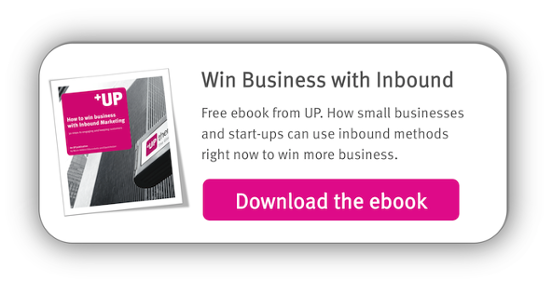In a previous blog post, we discussed ways small businesses and start-ups can use inbound marketing to create content that draws in an audience. In this post, we cover how to promote your content so your small business audience can find it. After all, why write it if no one will see it?
Using social media for content promotion
UP member Marie-Hélène Dibenedetto specializes in developing social media strategies. A recent success was a worldwide health-related Twitter campaign that generated spectacular results for less than the cost of a single page in a national newspaper.
As you might imagine, Marie-Hélène has plenty to say on the benefits of social media for start-ups. “Anyone can go on social media and get high visibility,” she says. “You can target far more specifically than with conventional media and, although you’ll need a budget to promote content, you only pay for results. But of course you have to use social media well. There are no guarantees.”
One of the big challenges with using social media is that it’s labour-intensive. So how does a start-up overcome this, especially with limited resources?
Time is money for start-ups
Even the most enthusiastic convert to inbound will admit that it’s a long-term approach and start-ups can’t afford to waste time. So what are other options are there?
On- and offline PR
On- and offline PR are powerful tools. But unless yours is a genuinely newsworthy story that will make an immediate splash, it takes time to build awareness. And, if you don’t have a PR background, you’ll need to hire an agency.
There are ways to do smart ads on social media that will drive people to your website. But these have to feel like native content and they cost money. Pay per click ads like Google’s AdWords can be very effective but getting them right is an art in itself, no matter what Google says.
Social selling
For Marie-Hélène, the solution staring start-ups starved of time and money in the face is what’s called social selling.
"Social selling," she explains, "is using social networks to position yourself and promote your content, as well as listening to what’s being said in your network and identifying sales opportunities. For someone who’s built an app that helps people with a particular medical condition, this could mean joining relevant online communities and becoming part of the conversation. In time, this could lead to an opportunity to talk about your product. Not as a sales pitch but in a way that offers value to the community."
Free tools
When it comes to making life easier with social media marketing, there are a number of good tools which are either free or don’t cost much.
For example, Buffer enables users to schedule posts in advance free for up to four social media channels. Free access to Trello is limited but enables users to plan social media content. Google Drive is excellent for sharing all kinds of information.
With tools like these, start-ups have everything they need to plan social media campaigns. But, what if you’re still lacking in classical marketing knowhow?
There are also a growing number of opportunities to take marketing courses online which are free if you’re not concerned about accreditation. One of the best of these is is Coursera.
A broader horizon with Inbound
Start-ups that recognise the benefits of inbound marketing, use the tools wisely and hire specialists have opportunities to reach their target audience with more accuracy than ever before. They also save money and time in the future by putting a strategy in place from day one to build on and refine for years to come.
Are you ready to embrace Inbound Marketing?
Download our free ebook now
